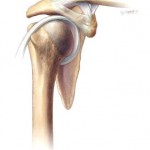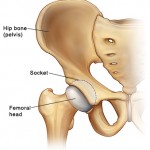 If you’ve ever taken a golf lesson, you’ve probably been told to rotate through your hips and shoulders. It’s great advice. It’s also not specific to golf. As I discussed in one of my earlier posts (Get
If you’ve ever taken a golf lesson, you’ve probably been told to rotate through your hips and shoulders. It’s great advice. It’s also not specific to golf. As I discussed in one of my earlier posts (Get  Your Diagonal On), on the whole your body is meant to move largely by rotation. And the truth is, that rotation should happen at the the ankle (subtalar joint), hips, thoracic spine (mid-back) and shoulder for everybody because those are the body parts specifically designed for it.
Your Diagonal On), on the whole your body is meant to move largely by rotation. And the truth is, that rotation should happen at the the ankle (subtalar joint), hips, thoracic spine (mid-back) and shoulder for everybody because those are the body parts specifically designed for it.
As with a lot of body parts, you can get a pretty good idea of their intended function just by looking at them. Check out the shoulder, hip, and thoracic spine joints; they are quite literally built to rotate:
OK, you might have to take my word for it on the thoracic spine picture…but note the ball and socket configuration of the shoulder and hip. Q.E.D.!
Rotation certainly occurs at other joints, but these areas are primary centers of rotation. Or rather, are meant to be primary areas of rotation….If for instance something’s preventing your hips from rotating well– e..g from inflexibile muscles, arthritis–your body doesn’t just stop rotating. It simply gets that rotation from somewhere else, typically the next available joint up the line–in this case, your lumbar (lower) spine . Unfortunately the excessive rotation puts more stress on that region than it was meant to handle, having been designed primarily for flexion and extension movements. It’s no mystery then why tight, restricted hips are an extremely common culprit in low back pain….and one of the first issues to be addressed in the treatment of back pain.
TIP: Whether you play golf, lift weights, or simply unload your dishwasher, check your motion in a mirror and see where you actually rotate from most. Your pelvis and mid-section should generally move together, while your chest above and/or hips below do most of the turning.One easy way to gauge whether the rotation’s happening at your hips is to look for the pant creasing on either side of the groin.



One Comment